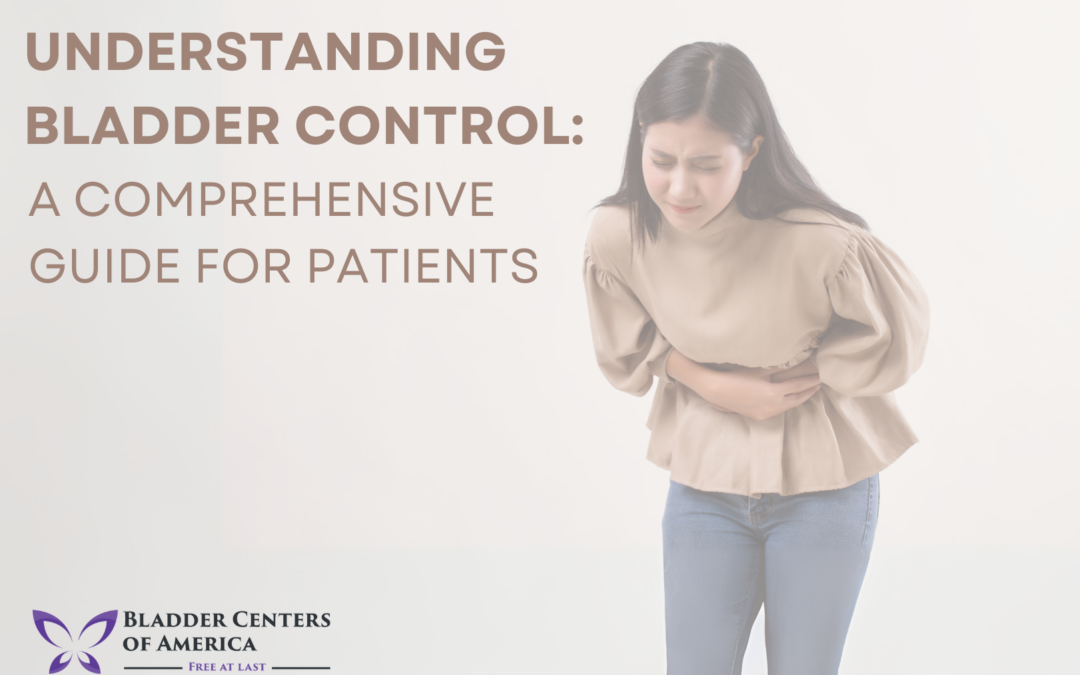Understanding Bladder Control is a comprehensive guide that aims to inform patients of the causes, symptoms, diagnosis, and treatment of bladder control problems.
It provides detailed information on how to identify if you may be experiencing bladder control problems and offers simple tips for maintaining good bladder control health.
With this guide, patients will have the necessary knowledge to proactively manage their bladder control issues and feel empowered in their healthcare journey.
What is Bladder Control?
Bladder control refers to the ability to voluntarily initiate and stop urination. This process requires coordination of not only the bladder but also the pelvic floor muscles, nerves, and hormones.
Problems with bladder control can adversely affect a person’s quality of life and lead to serious health complications if left untreated.
Understanding the causes, symptoms, and treatment of bladder control issues is essential for patients who may be experiencing problems with their bladder control.
Causes of Bladder Control Issues
Bladder control issues can be caused by a variety of factors, including aging, pregnancy, genital organ prolapse, neurological conditions, urinary tract infections, and certain medications. Additionally, a weakened pelvic floor muscle can contribute to bladder control problems.
This muscle is responsible for maintaining continence and if weakened due to childbirth or age-related reasons can lead to complications in controlling the bladder. Other causes of bladder control issues include lifestyle habits such as drinking excessive amounts of alcohol and caffeine.
Symptoms of Bladder incontinence
Symptoms of bladder problems are often related to incontinence, which is the involuntary loss of urine. Common symptoms can include frequent urination, a feeling of urgency when needing to use the bathroom, and leakage of urine before you get to the toilet.
Other signs of bladder control problems can include difficulty in starting or stopping the flow of urine and straining during urination.
Diagnosis and Treatment of Bladder Control Disorders
Diagnosis of bladder control issues usually begins with a physical exam, followed by urinalysis and imaging tests like an ultrasound or CT scan. Your doctor may also ask questions about your lifestyle and medical history to determine the underlying cause.
Treatment options vary depending on the underlying cause but often include lifestyle changes such as reducing consumption of alcohol and caffeine, pelvic floor strengthening exercises, medication, and in some cases, surgery.
Consulting a physician early is important to receive the most effective treatment plan for your individual needs.
Tips for Maintaining a Healthy Bladder
Maintaining healthy bladder control is essential for both your physical and mental well-being. Here are a few tips to help you stay on top of bladder health: drink plenty of water, cut down on caffeine and alcohol, practice regular pelvic floor exercises, and empty your bladder regularly.
Additionally, if you are having issues with incontinence or any other related problems, it is important to consult with a doctor as soon as possible. Taking proactive steps can help to resolve bladder issues before they become more serious.
Understanding bladder control is an important step in managing both urinary incontinence and other bladder-related problems. With the right approach and treatment plan, it is possible to improve your overall well-being and quality of life.
Addressing any issues that come up quickly is key; consulting with a doctor sooner rather than later can make all the difference. Taking the time to learn more and educate yourself on bladder health is a critical part of maintaining good health and achieving lasting results.

